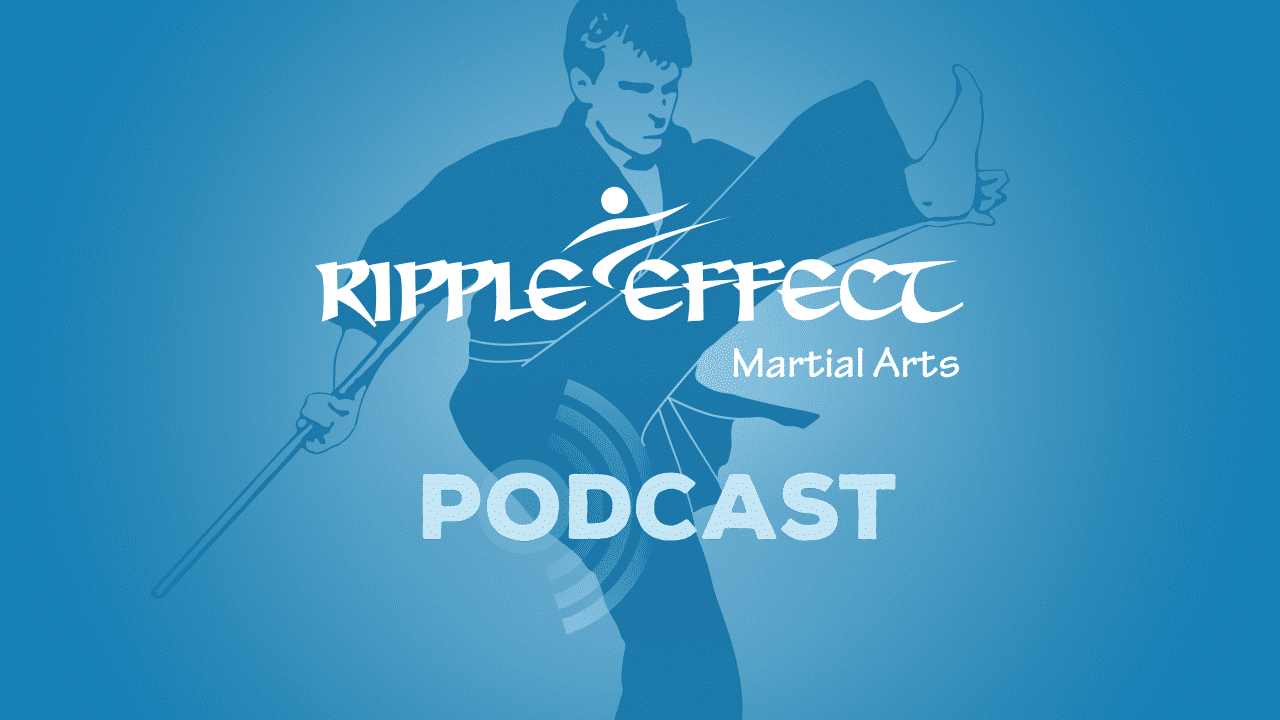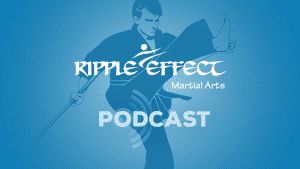Where did you get your start in the martial arts?
I started training young, at 7, with my brother. I went through a few martial arts schools over the years, but never got to black belt. Fast forward past college, and I found Ripple Effect Martial Arts. I’ve trained here the past seven years, and am currently a 2nd-degree Black Belt.
What’s your background and experience as a teacher?
I have a master’s in curriculum and instruction and my teaching license for Kindergarten though 3rd grade. I’ve taught as a lead teacher and as a para-instructor in classrooms for more than ten years.
How does teaching in a karate school compare to teaching at an elementary school?
There are definitely similarities. Getting all the kids to focus, for example. You have to focus on all the different students. Differentiation is super important. If one student needs help with a particular assignment, we pod them off for extra help. And that one-on-one help gets them back to class. It’s seeing how to best teach every student.
You have to see every individual student and understand where that child is, and what they need so they can learn.
How about communication with the parents?
At karate, the parent/teacher interaction happens constantly. You’re on the sidelines checking in with parents, and instructors are always evaluating student progress, checking job lists, making sure everything’s going well. It’s similar to the communication that happens in an elementary school, where teachers have to keep parents in the know about their students’ success or challenges. We’re all a team.
What’s your approach as a teacher if a student is falling behind?
Again, communication is key. If a student is falling behind, we have a conference. We give specific feedback, and we talk all together—parents, kids, instructors—as a team to make sure they get back on track.
In school, you have quarterly grades, and frequent check ins on assignments. In karate and martial arts, we have this kind of assignment and progress check process in place, for the same reason: success of kids.
It’s inevitable that some kids, at some time, are in danger of falling behind or failing a test [in karate or in traditional school]. I’ve failed tests before, or asked to test in an upcoming cycle because I wasn’t prepared. [My job as a teacher] is to keep kids on track and involve parents in the effort.
How are the worksheets, the job lists and the homework at karate like their counterparts at school? What do they teach kids?
One thing I like about martial arts is that there are very specific goals. Kids know they have to learn these specific punches, blocks, kicks, stances, forms and combinations to earn their next belt. That’s the curriculum part of the martial arts education.
The [belt] stripes and job lists are the goals in between the bigger goal of a new karate belt. They help keep kids respectful at home, helpful at home. Feedback from parents and teachers is essential to a young student’s promotion to their next belt; if a teacher or parent doesn’t sign off, we don’t allow that student to test.
The idea is a cycle of communication between karate instructors, parents and teachers. We want kids to be respectful and helpful at karate and act the same way at home and school. We’re growing good martial artists, but we’re growing good people overall.
As a teacher and guardian, have you personally seen the positive impact of martial arts on kids?
Absolutely. I love giving the reminder to kids I teach [at preschool] who are also in karate, “remember what we learned in karate class?” The kids instantly access that, and their focus and attention gets back on track.
With my nephews as well, they help with chores, they help clean, and it’s a work in progress [laughs]. But for them to know that this represents black belt effort, that it’ll earn them “good grades” in karate, it’s a huge motivator.
Literacy is an aspect of the martial arts that people may not think about. But since the start of the pandemic last year, “Read with a Black Belt” has been a really important platform for reaching kids. Has reading for kids always been fun for you?
I love reading to kids. I’ve been reading since I was 3, and I love kids being engaged in what we’re reading. Having them laugh along with the book is great. But to see kids learn how to deal with a situation based on what they saw a character do in a book, that’s amazing.
Does reading aloud actually impart these character lessons?
I think so. Many of the stories we read teach these lessons and the kids learn to access what happens, the characters’ decisions and consequences. They remember it, and it becomes real. Kids are learning even if they don’t know it.
You mentioned your early martial arts training never fully panned out. What made you return to the martial arts and continue to train?
It was actually the character development piece at Ripple Effect Martial Arts that won me over. I liked that kids were learning—and I was learning—how to be a good person. I’ve been through challenges in the past, and have come out the other side, as a person raising two kids, as a better human being. I believe my martial arts training has helped bring me to where I am today.


